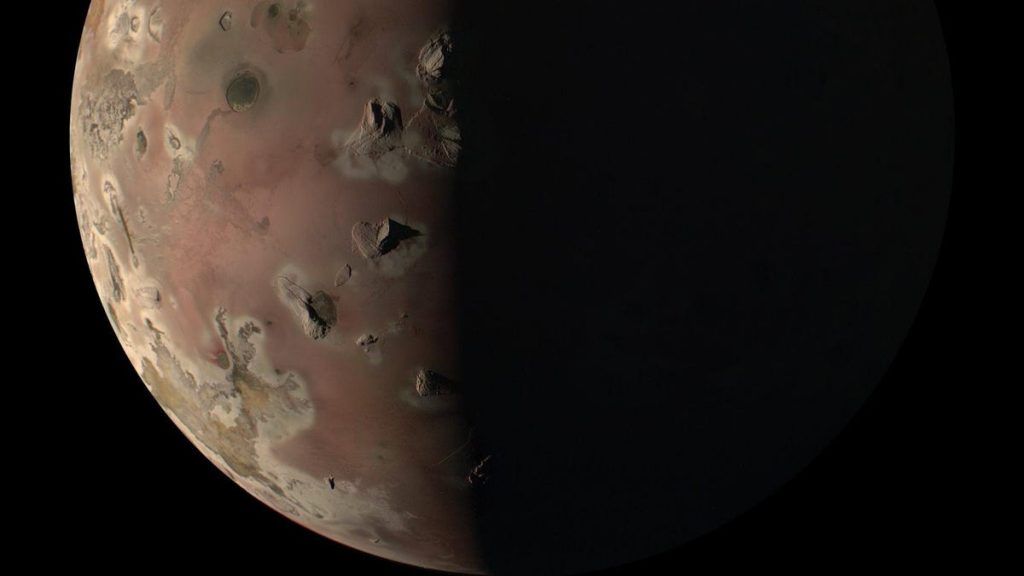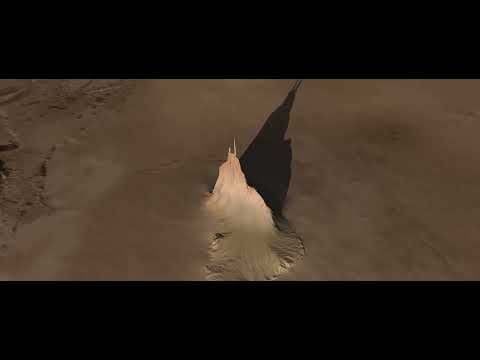Juno images provided close-up data for some intriguing features of the Jovian moon
The scientists of the mission Juno NASA scientists at Jupiter transformed data collected during two recent flybys on I in animations that highlight two of the Jovian moon’s most dramatic features: a mountain and an almost glass-smooth lava lake. Other recent science findings from the solar-powered space probe include updates on Jupiter’s polar cyclones and water abundance. The images with reconstructed aerial views of lakes and mountains were announced on Wednesday, April 16, by Juno principal investigator Scott Bolton during a press conference at the General Assembly of the European Geophysical Union in Vienna.
The Passione Astronomia WhatsApp channel is born! Sign up to receive all our updates
Close flyovers
Juno made extremely close flybys of Io in December 2023 and February 2024, coming within about 930 miles (1,500 kilometers) of the surface, obtaining the first close-up images of the Moon’s northern latitudes. There are amazing details showing these crazy islands nestled in the middle of a potentially magma lake rimmed with hot lava. The lake’s specular reflection recorded by the instruments suggests that parts of Io’s surface are glass-smooth, reminiscent of obsidian glass created volcanically on Earth.
Maps generated with data collected by Juno’s Microwave Radiometer (MWR) instrument reveal that Io not only has a relatively smooth surface compared to Jupiter’s other Galilean moons, but also has cooler poles than mid-latitudes. During Juno’s extended mission the probe is descending closer and closer to Jupiter’s north pole with each pass. This change in orientation allows the MWR instrument to improve its resolution of Jupiter’s north polar cyclones. The data allows comparisons across multiple polar wavelengths, revealing that not all polar cyclones are the same.
The most striking example of this disparity can be found with the central cyclone at Jupiter’s north pole. It is clearly visible in both infrared and visible light images, but its microwave signature is nowhere near as strong as that of other nearby storms. This tells us that its underground structure must be very different from that of other cyclones. The MWR team continues to collect more and better microwave data with each orbit, so scientists plan to develop a more detailed 3D map of these intriguing polar storms.
Jovian Water

One of the mission’s primary science goals is to collect data that could help scientists better understand Jupiter’s water abundance. To do this, the Juno science team isn’t hunting for liquid water. Instead, they are trying to quantify the presence of oxygen and hydrogen molecules (the molecules that make up water) in Jupiter’s atmosphere. An accurate estimate is critical to piecing together the puzzle of the formation of our solar system.
Jupiter was probably the first planet to form and contains most of the gas and dust that was not incorporated into the Sun. The abundance of water also has important implications for the gas giant’s meteorology (including how wind currents flow on Jupiter) and for the internal structure. In 1995, NASA’s Galileo probe provided the first data set on water abundance on Jupiter during the probe’s 57-minute descent into the Jovian atmosphere. But the data created more questions than answers, indicating that the gas giant’s atmosphere was unexpectedly warm and – contrary to what computer models indicated – devoid of water.
The probe achieved impressive science results, but its data was so far removed from models of Jupiter’s water abundance that scientists considered whether the location sampled might be an anomaly. And before Juno arrived it was not possible to confirm this. Now, with recent results obtained with MWR data, scientists have determined that the abundance of water near Jupiter’s equator is about three to four times that of hydrogen. This definitively proves that the entry site of the Galileo probe was an abnormally dry, desert-like region.

The findings support the belief that during the formation of our Solar System, water ice material may have been the source of the enrichment of heavy elements (chemical elements heavier than hydrogen and helium accumulated by Jupiter) during formation of the gas giant and/or evolution. Jupiter’s formation remains puzzling, because Juno’s findings on the gas giant’s core suggest a very low water abundance, a mystery that scientists are still trying to solve.
Data collected during the remainder of Juno’s extended mission could help, both by allowing scientists to compare Jupiter’s water abundance near the polar regions with the equatorial region and by shedding further light on the structure of the planet’s diluted core.
In its own small way, Passione Astronomia helps you understand how the universe works. And the universe works better if the people who are part of it are well informed: if they have read nonsense, lies, poisons, then it ends up as it ends up. It’s not going very well right now. This is why it is important that someone explains things well. Passion Astronomy does its best. Subscribe!
Source: NASAJPL
Tags: Reconstructed aerial views lakes mountains watch NASAs incredible video






